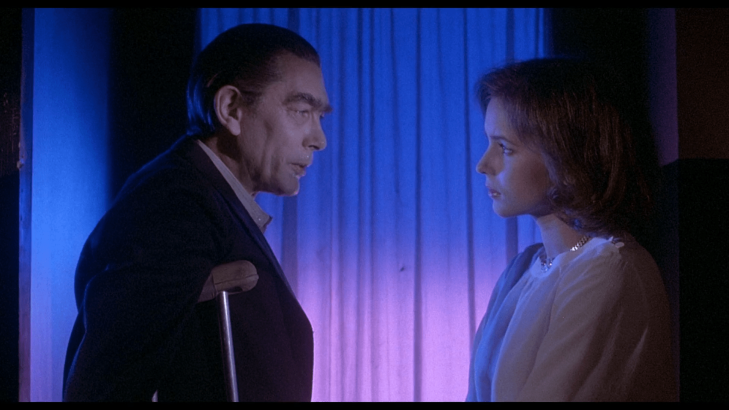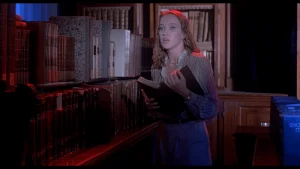
Rose Elliot, a young poet in Rome, murdered after she reads a Latin book that tells the supernatural story of the Three Mothers. Her brother Mark investigates her murder and, after his friend Sara is killed, heads for New York.
| Reviewed by: Ivan Chin
Part of Dario Argento’s Three Mothers trilogy, Inferno is the spiritual sequel to Suspiria, which is hailed as a key film in the horror genre. Visually, Inferno holds many similarities with its predecessor, but Argento takes a bolder approach here, confronting the audience head-on with its horror. It’s a film that is as intricate as it is brutal but doesn’t rely on shock value to sell itself.
The film opens with Rose, a poet, reading off the myth surrounding the three mothers, namely the Mother of Sighs, Mother of Tears, and Mother of Darkness. The myth contains a riddle, which will uncover the secrets of the three mothers. It reveals little of their origins while shrouding them in an enigmatic and insidious veil.
Rose’s obsession leads her to investigate, and she stumbles upon the remnants of a buried past, stirring something awake. Our suspicion of this myth is further heightened by a series of strange occurrences, almost as a reactionary force to Rose’s curiosity. It builds a feeling of impending doom that we anticipate for the rest of the film as the paranoia slowly creeps up.
Thus the narrative also follows through, prodding past the veil. It beckons us, dropping literary breadcrumbs to tantalise us to take a peek. At first much of it seems like a puzzle, but as we follow each character, the pieces start to assemble. There are, of course, certain phenomena that are unexplained, presumably for dramatic effect, but it sits well with Argento’s evocative style.
Where many horror films typically cloak their scenes in dreary darkness with harsh shadows to set the tone, Inferno is washed with the illumination of colours. The red and blue palette is noticeably prominent — the striking red heralds danger while the blue lends an eerie coolness to balance the mood. In staging the horror, wider shots are used instead of close-ups, focusing on the environment acting against the character, instead of mere expressions.
Though Argento’s use of colour and sound already creates a distinct form of atmospheric horror, Inferno goes a step further. There are not many qualms about picking off certain characters, even blatantly targeting them. The killings are motivated though, so it is not simply a meaningless rampage. This style seems, at first, like a contrast against the more subtle atmospheric horror, but they work well together to create the buildup of tension before striking. Argento respects the audience enough not to give us cheap scares, and each scene is crafted uniquely to sell it.
Inferno serves not just to thematically explore more of the myth concerning the Three Mothers, but to evolve in the scope of the horror it portrays. While fans of Suspiria, myself included will no doubt draw comparisons between the two, it deserves to be seen and judged on its own merits. _ Ivan Chin is a film lover who enjoys a variety of genres, from blockbusters to avant-garde cinema.He has a penchant for Chinese cinema, specifically Hong Kong, and wants to see more local films gain recognition. He tries to write something about each film he watches as he feels there’s certainly something worth mentioning. |
Click Here For More Film Reviews
Do you love writing? Send us a film review and we will feature it on our website. Any film that people can see in the theater or online. Email to: media@scape.sg
This review is also published on Sinema as part of *SCAPE’s Film Critics Lab: A Writing Mentorship Programme.


